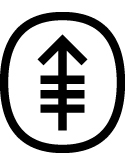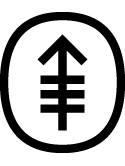Dye-mediated photolysis is capable of eliminating drug-resistant (MDR(+)) tumor cells Journal Article
| Authors: | Lemoli, R. M.; Igarashi, T.; Knizewski, M.; Acaba, L.; Richter, A.; Jain, A.; Mitchell, D.; Levy, J.; Gulati, S. C. |
| Article Title: | Dye-mediated photolysis is capable of eliminating drug-resistant (MDR(+)) tumor cells |
| Abstract: | We evaluated the potential role of photoradiation therapy with a benzoporphyrin derivative, monoacid ring A (BPD-MA), and dihematoporphyrin ether (DHE), for the ex vivo purging of residual tumor cells from autologous bone marrow (BM) grafts. BPD-MA and DHE photosensitizing activity was tested against two human large-cell lymphoma cell lines and colony-forming unit- leukemia (CFU-L) derived from patients with acute myelogenous leukemia (AML). In mixing experiments, 4-log elimination of tumor cell lines was observed after 1 hour of incubation with 75 ng/mL of BPD-MA or 30 minutes of treatment with 12.5 μg/mL of DHE followed by white light exposure. By comparison, using the same concentration of BPD-MA, the mean recovery of normal BM progenitors was 4% ± 0.8% (mean ± SD) for granulocyte-macrophage colony- forming unit (CFU-GM) and 5% ± 0.8% for burst-forming unit-erythroid (BFU- E). Similarly, DHE treatment resulted in the recovery of 5.2% ± 2% and 9.8% ± 3% of CFU-GM and BFU-E, respectively. Furthermore, equivalently cytotoxic concentrations of both DHE and BPD-MA and light were found not to kill normal pluripotent stem cells in BM, as demonstrated by their survival in two-step long-term marrow culture at levels equal to untreated controls. The T- lymphoblastic leukemia cell line CEM and its vinblastine (VBL)-resistant subline CEM/VBL, along with the acute promyelocyte leukemia cell line HL-60 and its vincristine (VCR)-resistant subline HL-60/VCR, were also tested. BPD- MA at 75 ng/mL was able to provide a greater than 4-log elimination of the drug-sensitive cell lines, but only a 34% and 55% decrease of the drug- resistant HL-60/VCR and CEM/VBL cell lines, respectively. On the contrary, 12.5 μg/mL of DHE reduced the clonogenic growth of all the cell lines by more than 4 logs. Further experiments demonstrated decreased uptake of both BPD-MA and DHE by the resistant cell lines. However, all the cell lines took up more DHE than BPD-MA under similar experimental conditions. Our results demonstrate the preferential cytotoxicity of BPD-MA and DHE toward neoplastic cell lines and CFU-L from AML patients. In addition, DHE was slightly more effective in purging tumor cells expressing the p-170 glycoprotein. These results suggest that photoradiation with DHE would be useful for in vitro purging of residual drug-resistant leukemia and lymphoma cells. |
| Keywords: | controlled study; leukemia; acute granulocytic leukemia; human cell; cancer growth; comparative study; cell survival; bone marrow; cytotoxicity; drug resistance; dose-response relationship, drug; tumor cells, cultured; stem cell; leukemia, promyelocytic, acute; lymphoma, b-cell; kinetics; drug uptake; tumor cell line; bone marrow cell; large cell lymphoma; bone marrow transplantation; photochemotherapy; radiation-sensitizing agents; photosensitivity; multidrug resistance; colony forming unit gm; colony forming unit; bone marrow purging; photolysis; lymphoma cell line; leukemia, myelocytic, acute; burst forming unit e; porphyrins; lymphoma, large-cell; human; priority journal; article; benzoporphyrin derivative; support, non-u.s. gov't; hematoporphyrin derivative; photofrin ii; dihematoporphyrin ether |
| Journal Title: | Blood |
| Volume: | 81 |
| Issue: | 3 |
| ISSN: | 0006-4971 |
| Publisher: | American Society of Hematology |
| Date Published: | 1993-02-01 |
| Start Page: | 793 |
| End Page: | 800 |
| Language: | English |
| PUBMED: | 8427970 |
| PROVIDER: | scopus |
| DOI: | 10.1182/blood.V81.3.793.793 |
| DOI/URL: | |
| Notes: | Source: Scopus |
Altmetric
Citation Impact
BMJ Impact Analytics
Related MSK Work




